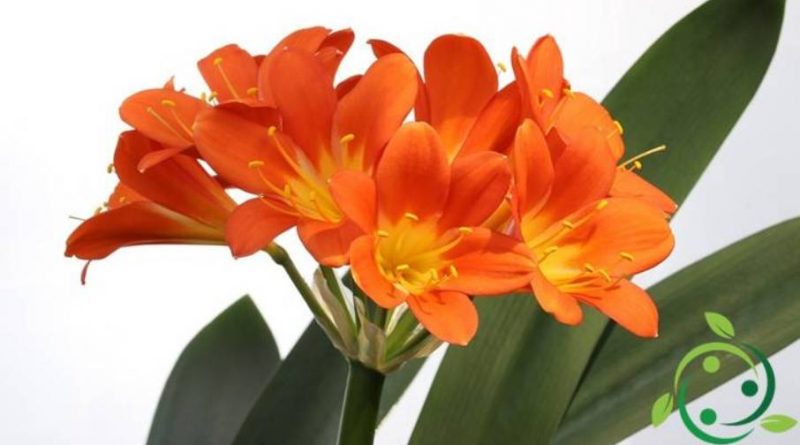How to grow Clivia
How to grow Clivia
The Clivia is a genus of plants (Clivia Lindl.) Of the Amaryllidaceae family with origins in southern Africa and which today is cultivated mainly as a houseplant.
Clivia is recognized for its very ornamental foliage and flowers, with large rhizomatous, fleshy and bulky roots. The leaves are even up to 1 meter long, with a width of 5-7 cm, are arched, green in color and are born directly from the roots, presenting themselves with a beautiful lush tuft.
Flowering occurs normally in the spring period and the flowers start from a long central stem, with a funnel or tubular shape and can be straight or hanging. Each plant can produce 20 to 60 flowers with colors ranging from orange to red to yellow. The only drawback is that these flowers are of short duration because they wither immediately but the plant provides to produce them continuously.
From the flowers red and fleshy berries are generated, with some seeds inside which mature with very long times.
In this card we will see how to cultivate the Clivia following the most useful agronomic tricks.
For the cultivation of Clivia it is necessary to choose well-sheltered environments; it can grow outdoors but only in very hot and humid climates.
In fact, clivia is a plant that loves very high temperatures in summer, even up to 28 degrees, provided that the relative humidity is quite high. In winter it should be placed in environments where the temperature does not fall below 15 degrees.
For this reason, plants cultivated in pots can be moved outside in the summer period but not in the sun’s rays.
For the preparation of the potting soil a mixture of forest soil, sand and small pieces of pine bark can be used; a layer of very large gravel or expanded clay is then placed at the bottom of the pot to facilitate the drainage of excess water.
Furthermore the vase is good if it is robust, possibly in terracotta, to contain the considerable strength of the Clivia roots.
For irrigation regulate considering that the Clivia is watered abundantly and regularly throughout the period from spring to autumn in order to keep the soil always moist.
But remember to check that stagnation does not occur and to imitate the microclimate of its areas of origin, you can often nebulize, with deionized water, in the environment where the plant grows.
In winter the irrigations must then be drastically reduced.
As for the fertilization it is advisable to intervene every 15 – 30 days, using a liquid fertilizer to be diluted in water; on the other hand, for plants grown in warm environments and outside it is preferable, before planting, to provide the substrate with good quantities of earthworm humus or even mature bovine manure.
The plant does not need to be pruned but, also for an aesthetic aspect, it is good to eliminate the wilted leaves with sterilized scissors.
For plants grown in pots remember to carry out repotting every 2-3 years, to support the rapid growth of the plant; repotting should always be done using larger containers.
In any case, the size of the vessels should be set at around 20 cm in diameter; in larger containers only the growth of the roots is favored at the expense of flowering.
For the multiplication of the Clivia it can then proceed both by seed and by division of the plant.
In seed propagation, this is done in the summer, burying the seeds in small pots placed in a bright place, taking care to constantly wet the soil. As soon as the seedlings appear, they can be poured into larger pots.
In the propagation by division of the plant the optimal period is that of spring: the plants are separated leaving different leaves on each one. Then proceed to repot into small pots, making sure that the soil is already wet. They are left in the shade and after the formation of the roots they can be moved to a brighter area.
As for adversity and disease, we can say that Clivia is a fairly rustic and resistant plant.
The only drawback can be represented by red spiders and cochineal. In this sense we must not exaggerate with nitrogenous fertilizers and always maintain an average level of humidity that will also avoid the yellowing of the leaves due to poor or excessive irrigation.
The presence of brownish leaves may be due to excessive brightness; in this case the Clivia should be placed in a more shaded place.
Among the species of Clivia we remember:
– Clivia nobilis; of all, it is the one that grows more slowly. The flowers are red or orange, pendulous and tubular. They appear in the middle of winter. The height of the plant is about 30 cm.
– Clivia caulescens; it is recognized by the red-orange flowers, with touches of yellow and pendulous. The leaves are long and thin. The plant can become very tall, even reaching 2 meters.
– Clivia robusta; this species can also be up to 2 meters. The flowers are very curved and with a classic orange tone.
– Clivia cyrtanthiflora; is a variety obtained from the hybridization between the nobilis and the miniata. When it flowers it produces up to 60 flowers, in the period between autumn and winter. It also adapts to cold temperatures, being the most rustic of all. This is why many grow it in the garden.
– Clivia miniata; it is a variety that presents flowers very different from the rest of the species: they are indeed very large, orange and open upwards. The plant flowers from August to November. It does not exceed 50 cm in height. It is often used to obtain new hybrids.
– Clivia gardenii; the latter has orange and yellow flowers, up to 70 cm tall and blooms in full winter.

